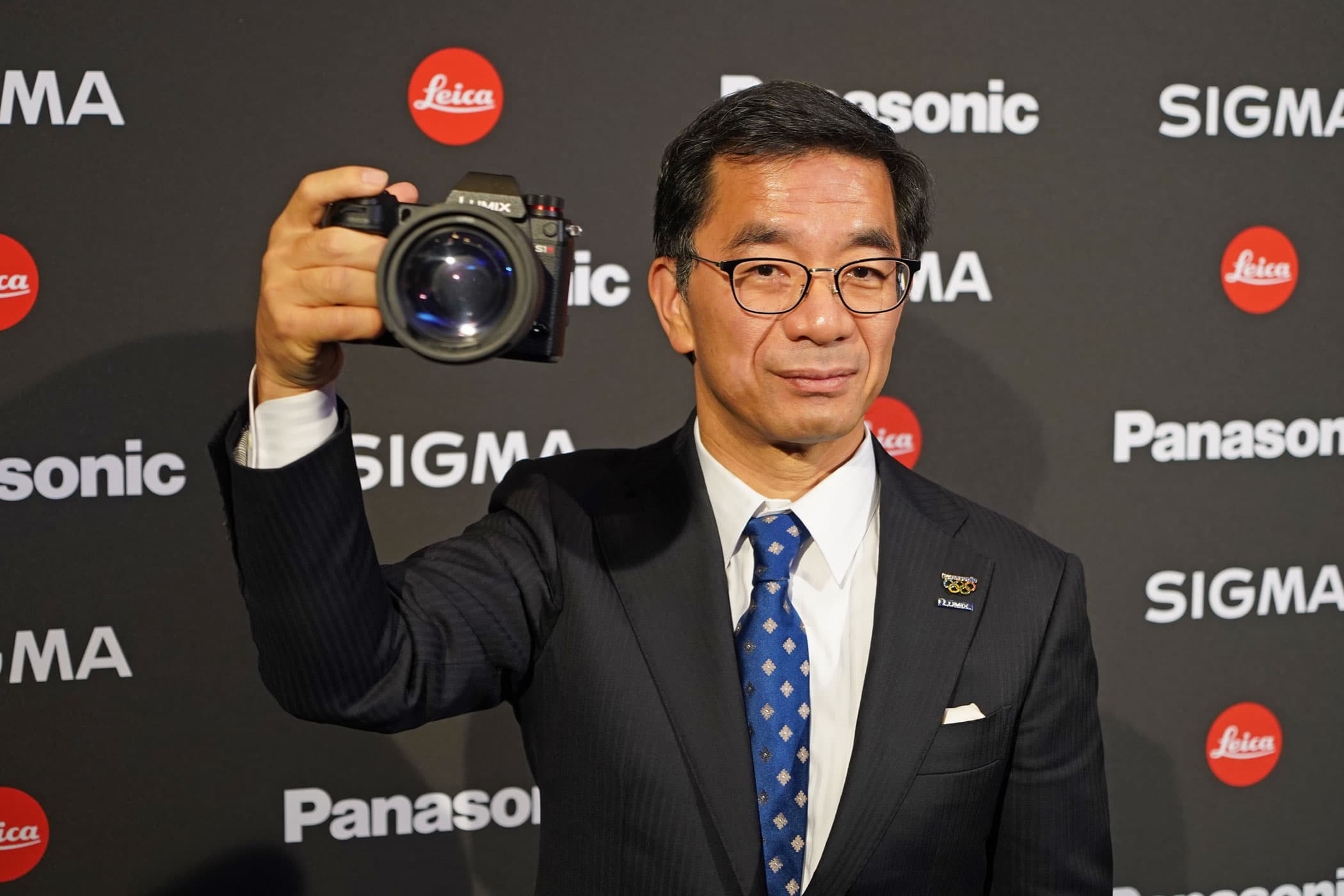It’s happening! After ten years of building and refining the Micro Four Thirds mirrorless system, Panasonic has announced their intention to enter the full-frame mirrorless market. This groundbreaking news is one of the headline stories to break at this year’s Photokina expo – the world’s leading fair for imaging from where Amateur Photographer will be reporting over the next few days.
It may only be a development announcement, but this exciting news paves the way for the future and reiterates that there’s room to expand Panasonic’s imaging business. It’s still early days, but a fair amount of information has already been released about the direction for Panasonic’s new S Series. So what exactly can we expect to see from the brand come early 2019?
The Lumix S Series
The news of Panasonic breaking into full-frame mirrorless market arrives in the same year the manufacturer is celebrating its 10-year anniversary of its Micro Four Thirds system. Panasonic’s new full-frame S-system is to co-exist alongside the company’s well-established Micro Four Thirds system and will be targeted at professionals and serious photographers who don’t want to make any compromise when it comes to image quality or performance.
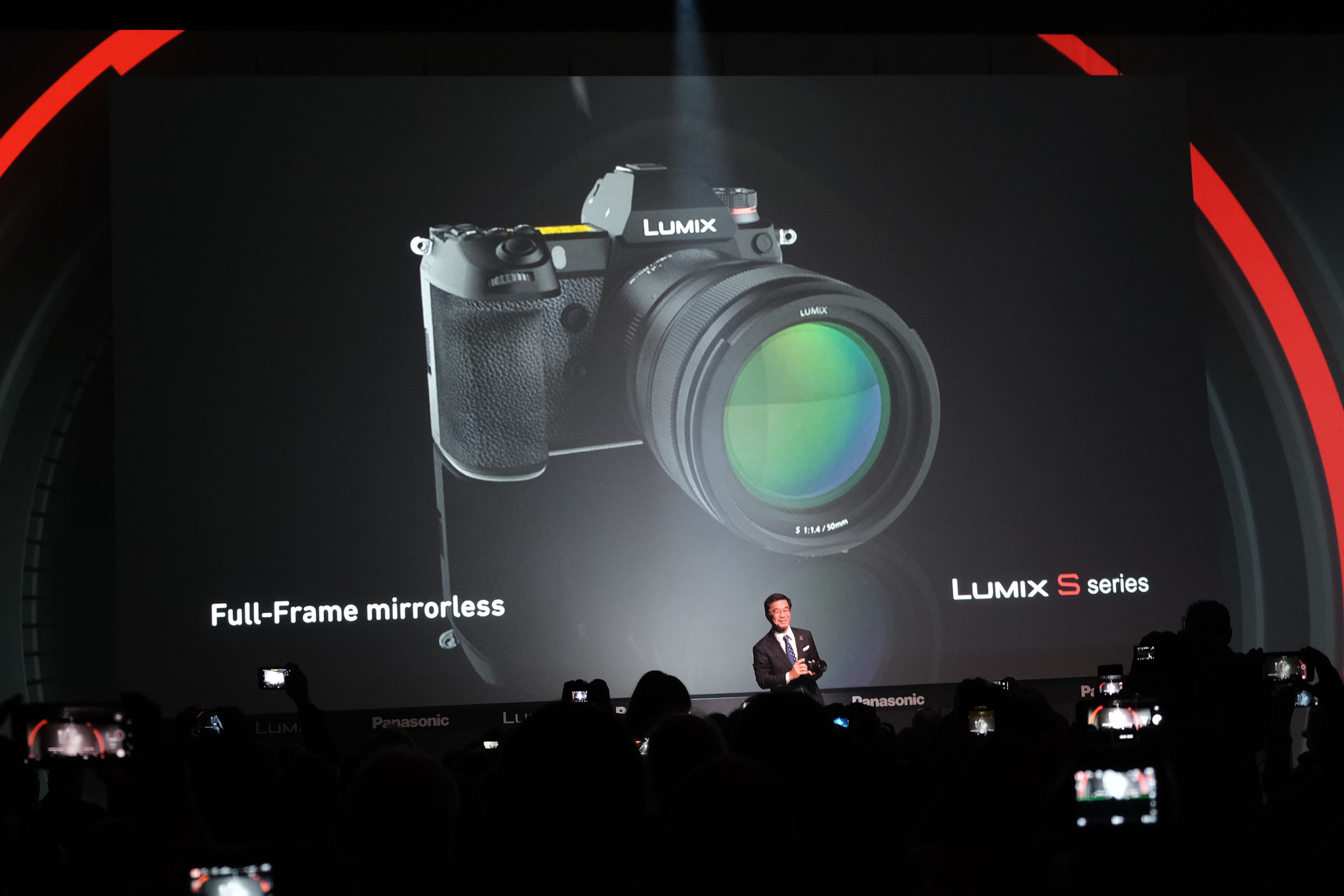
The Panasonic Lumix S Series was unveiled to the photographic press at Photokina 2018
The two full-frame mirrorless cameras that Panasonic will launch early next year will be the Panasonic Lumix S1 and Panasonic Lumix S1R. Both models will be be built around the Leica L-mount – one of two brands Panasonic has formed a new alliance with to create a system that’ll be well supported by full-frame optics. More information about Panasonic’s cooperation with Leica and Sigma Imaging can be found in our Leica joins forces with Panasonic and Sigma to form L-mount alliance news story.
At the same time as the development announcement, Panasonic has disclosed that they’ll make three L-mount lenses for its new full-frame mirrorless cameras. These will include a 50mm f/1.4, 24-105mm standard zoom and a 70-200mm telephoto zoom. No information about the maximum apertures of the zoom lenses is known at present, however from the lens diagrams we’ve seen we expect the standard zoom to have a constant aperture of f/4 and the telephoto zoom to have a constant aperture of f/2.8. We’re hoping to see all the new lenses displayed behind glass on the Panasonic booth at Photokina 2018 so we’ll bring you photos of these as soon as we get them.
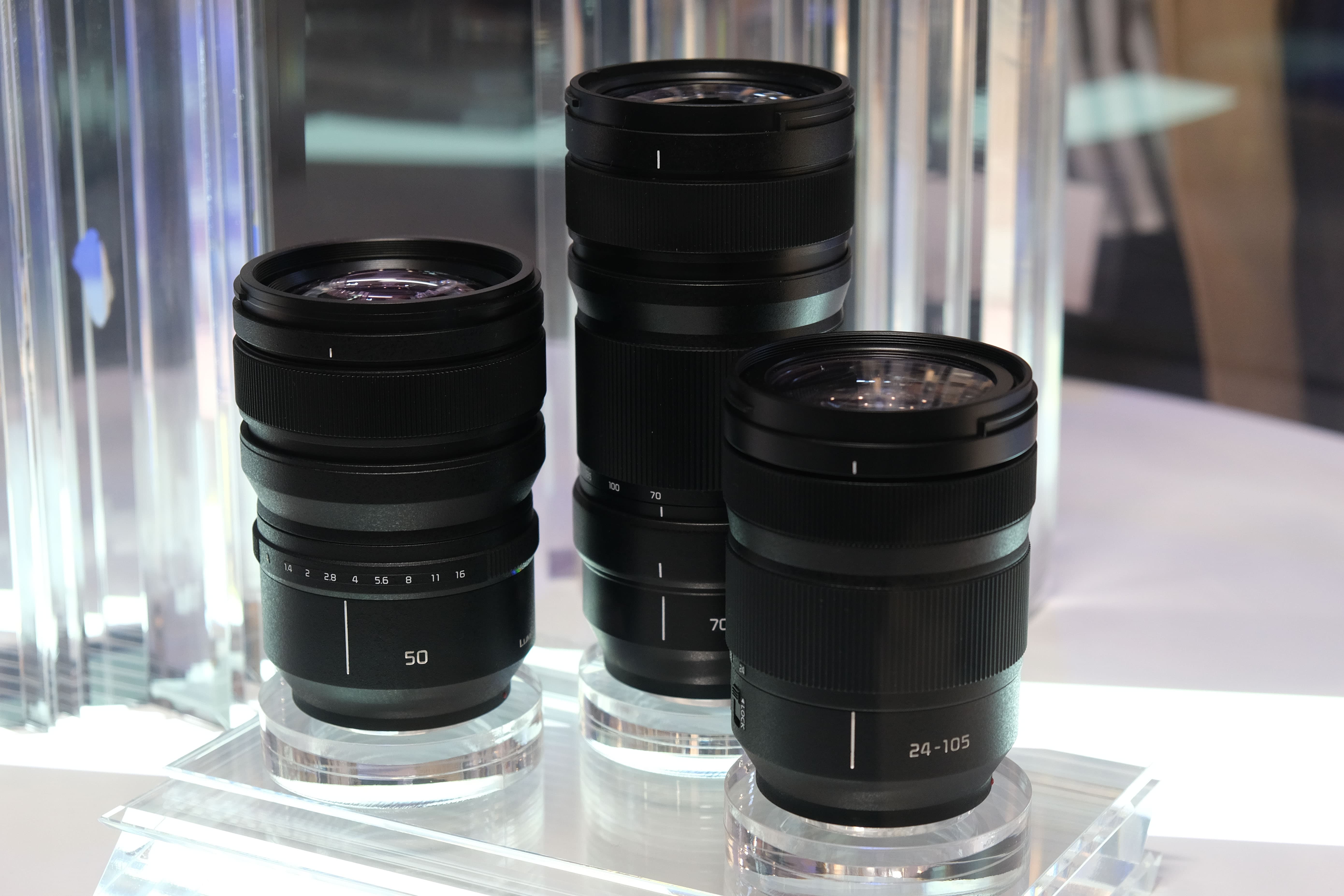
The three Lumix S Series lenses behind glass on the Panasonic stand at Photokina 2018
After the release of the two cameras and three lenses, Panasonic will focus on expanding its new system. We’ve been told we can expect ten Panasonic L-mount lenses to be available by the end of 2020, which excludes the other L-mount offerings from Leica and Sigma. At present six Leica L-mount exist, which includes the 16-35mm f/3.5-4.5, 24-90mm f/2.8-4, 90-280mm f/2.8-4, 50mm f/1.4, 75mm f/2 and 90mm f/2. The third-party L-mount lenses that’ll be offered from Sigma are expected to be more affordable and we’ll bring you more information about these as we receive it.
The Panasonic Lumix S1 and Panasonic Lumix S1R
Like we’ve seen from other full-frame camera manufacturers, Panasonic will launch into the full-frame market with two models to satisfy the demands of different professional users. The Panasonic Lumix S1R is said to be the ultimate choice for professionals demanding high resolution from a full-frame mirrorless camera. It’ll feature a 47-million-pixel full-frame imaging sensor and inherits DNA from the company’s most recent Micro Fours Thirds models.
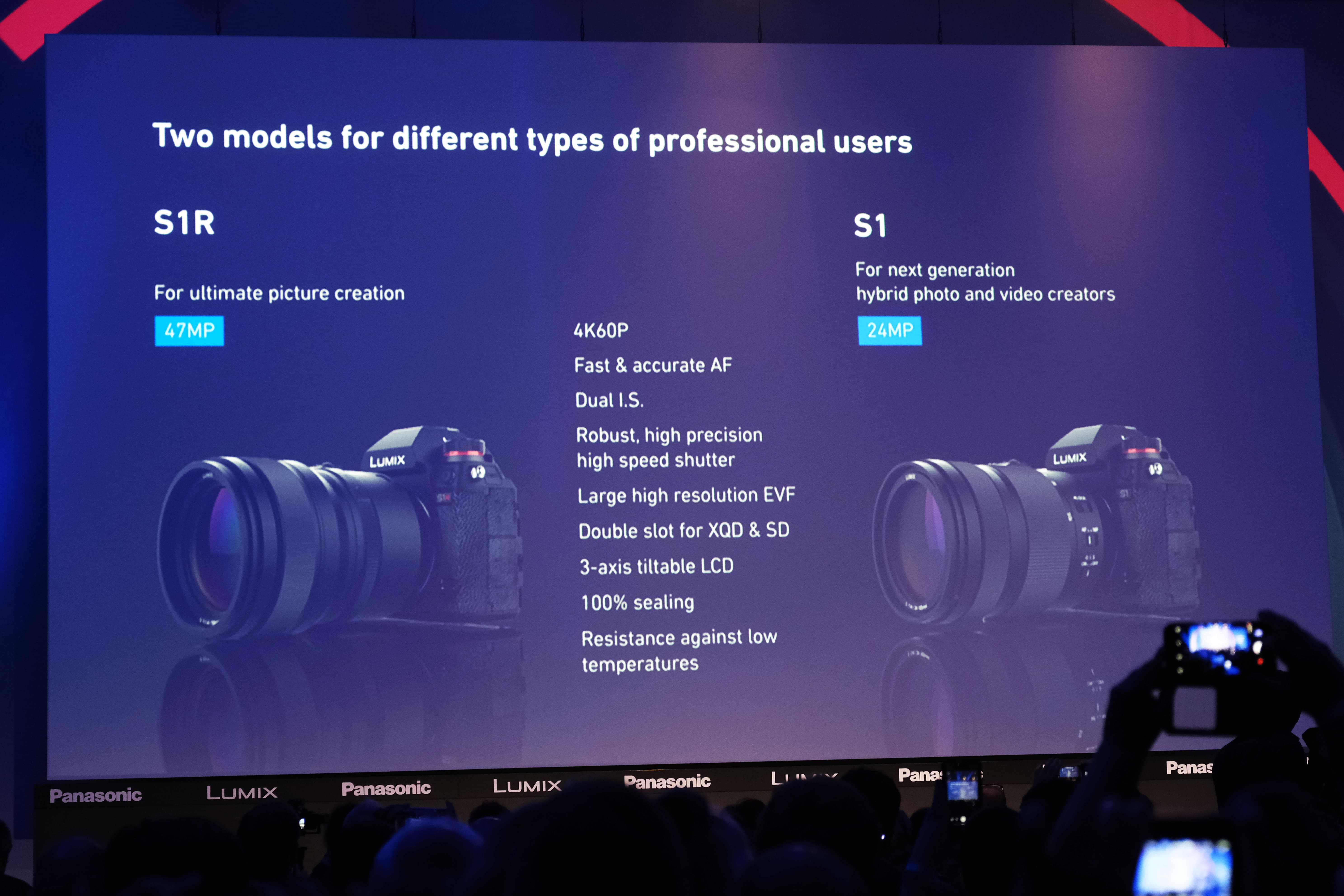
The key features of the Lumix S1 and Lumix S1R models as shown at Photokina 2018
The Panasonic Lumix S1 will adopt the same design and footprint as the Lumix S1R, albeit with a lower resolution. The Panasonic Lumix S1 will feature a 24-million-pixel full-frame sensor, and like the Lumix S1R, will benefit from a new Venus imaging engine and a Dual Image Stabilizer system, combining in body image stabilisation with lens image stabilisation. Both models will support 4K 60p/50p video recording and after all the talk of recent full-frame mirrorless cameras only having one card slot, it’s refreshing to be able to confirm that both models will offer an XQD slot as well as an SD card slot.
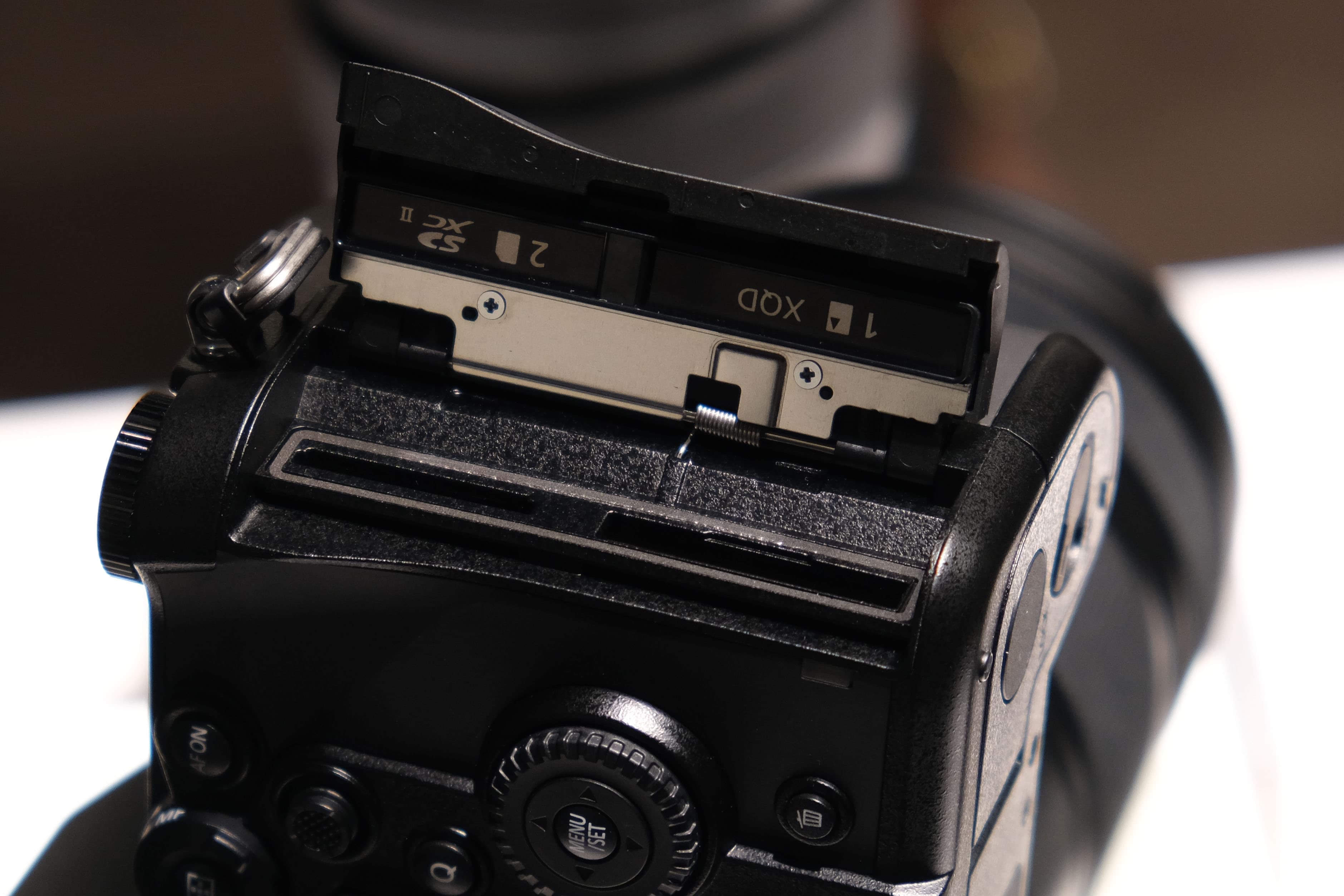
An XQD card slot is positioned directly below the Lumix S1R’s SD card slot
To ensure that the cameras are highly durable and up to the demand of professional use, Panasonic will equip both full-frame cameras with three-axis tiltable touchscreens and weather seals on all dividing lines. Users get a large top plate panel to refer to camera settings too. We’re also told that the shutter will be made to an extremely durable standard and the build quality has been made with low-temperature resistance in mind.
Initial thoughts
Prior to the development announcement being released, AP was invited to take a closer look at a plastic mock up of the new Panasonic Lumix S1R. The first thing you notice about the design of the Lumix S1R is its size. Up against the likes of the Sony A7 III and Nikon Z7, which we just so happened to have with us in our bag at the time, the Lumix S1R is a noticeably larger full-frame mirrorless camera. The Lumix S1R is probably best described as Panasonic Lumix G9 on steroids.
Many of the controls and buttons are positioned similarly across the body to the Lumix G9, although the lens release button is on the opposite side and is positioned below the two function buttons around the lens mount. The camera adopts the same lockable mode dial with drive dial switch beneath, plus you also get a similar layout of buttons to control White Balance, ISO and exposure compensation directly behind the shutter button.
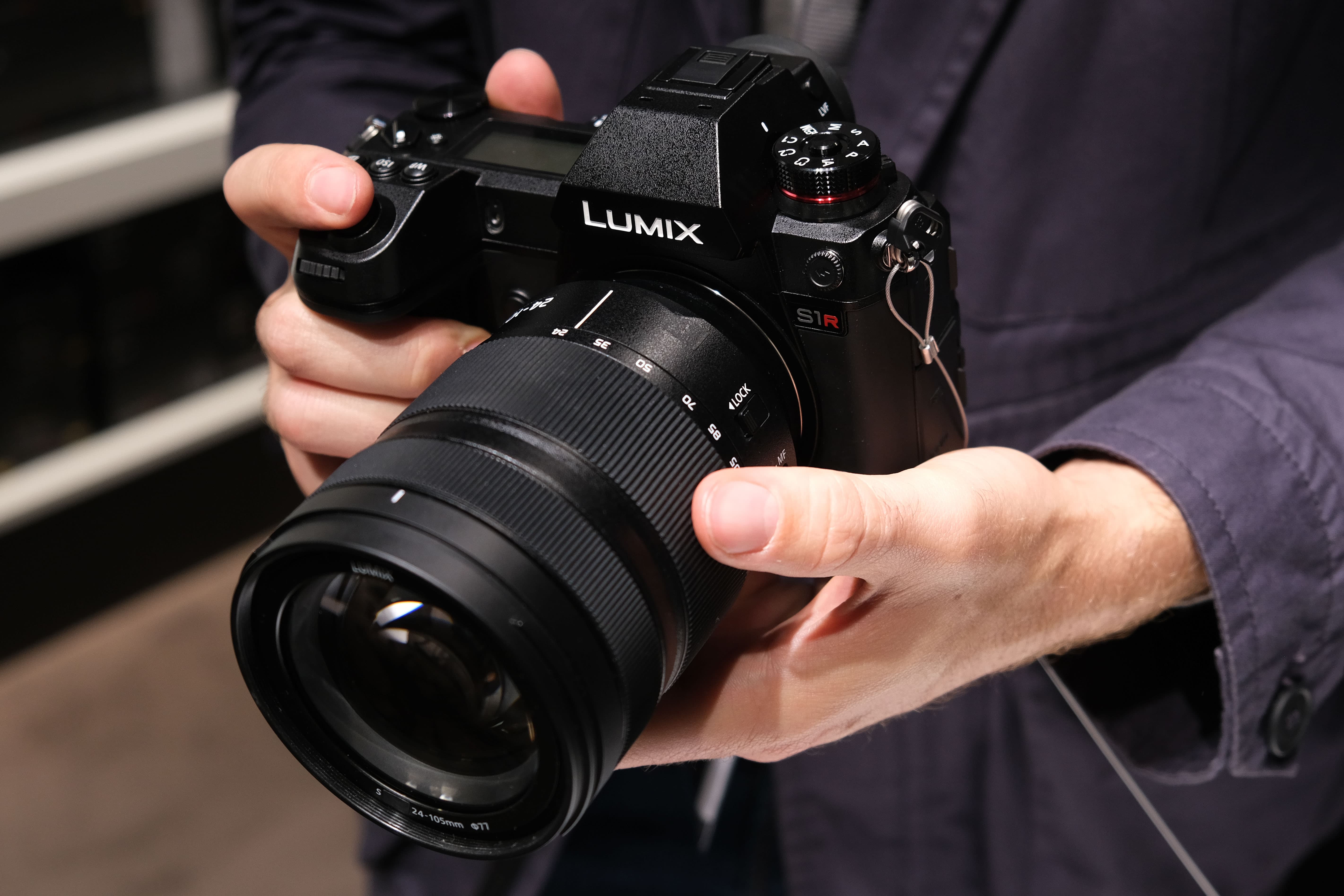
AP visited the Panasonic stand during press day at Photokina and handled the new Lumix S1R
One slightly odd decision on the mock up sample we looked at has been Panasonic’s decision to move the on/off switch. Unlike the Lumix G9, the on/off switch doesn’t surround the shutter button. Instead, it’s located further back on the top plate, forcing you to operate it using your thumb. From a brief period of time handling the mock up sample it doesn’t feel like it’ll be quite as intuitive to power up or switch off. On mirrorless cameras, where you can often find yourself switching the camera on and off between shots to conserve battery power, you really want on/off control within easy reach of your index finger. Hopefully Panasonic have time to make this change before the camera comes to market next year.
During my brief hands on, I also found the movie-record button is quite a stretch for the thumb and is positioned tight up against the EVF. The AF mode switch falls nicely to hand at the rear of the camera, making it relatively easy to switch between AF-S, AF-C and MF with your thumb, and inside it you’ll get a button to select the AF-area mode. The AF toggle that’s used to reposition the AF point around the frame is again identical to the Lumix G9’s and the playback button is positioned to the left of the EVF – forcing you to bring your left hand into play when you’d like to review images. The rear scroll dial is identical to that on the Lumix G9 too.
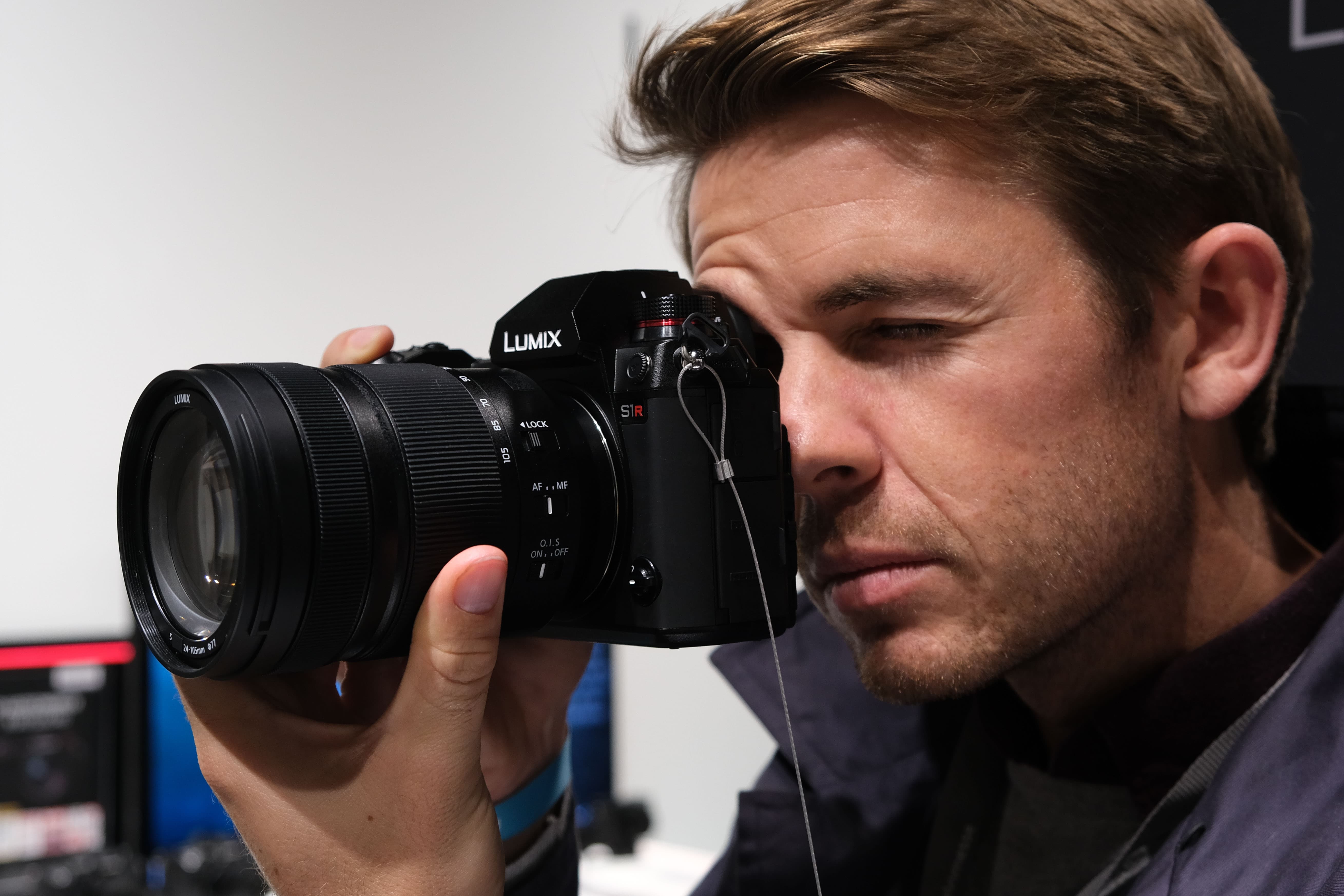
Michael Topham raises a mock up sample of a Lumix S1R to his eye to get a feel for its handling
Those who’ve used the Lumix G9 will feel right at home picking up the Lumix S1 and Lumix S1R. It’s a camera body that feels substantially larger in the hand than any model we’ve seen before in the Micro Four Thirds system and is more like a DSLR in this respect. Anyone with large hands who find small mirrorless cameras too fiddly or simply wants more of a grip to wrap their hand around will enjoy the pickup of the Lumix S1R, whereas those looking to shed weight and downsize from their DSLR will possibly look at it as being too big and cumbersome.
The opinions above were based on a brief spell handing a plastic mock up sample of the Lumix S1R coupled to a plastic mock up sample of the 50mm lens. We’ll have to wait until next year until we can offer a detailed report of how the first pre-production samples feel in the hand, but early impressions are very good. Panasonic have had excellent foundations on which to build the Lumix S1 and Lumix S1R, and though it’s too early to say, they have great potential to be the best stills cameras Panasonic has ever made.
Professional support
Panasonic has acknowledged that in order to fulfill professional’s expectations, it needs a professional platform to support new users attracted their system. This comes in the form of Lumix Pro – a global platform that will go live when the Lumix S1 and S1R hit the market.

In recognition of the fact that photographers and videographers require more than just products within their everyday working life, the platform has been designed to ensure that they can continue to shoot whilst being assisted with a range of service and repair benefits and consistent global support.
With Lumix Pro, Panasonic aims to build a long-term relationship with professional users and increase the brand message that Lumix is more than just a consumer brand, setting its sights on being a brand that pros can turn to. There will be several tiers of Lumix Pro support from Lumix Pro Basic right up to Lumix Pro Black. To learn more about the new Panasonic Lumix Pro programme visit www.lumix-pro.com


